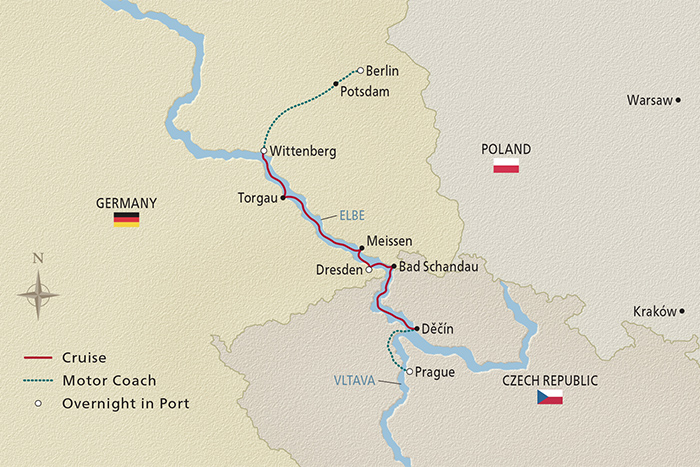Find the River Cruise you’re looking for...
10 Day Viking River Cruise from Prague to Berlin 2026
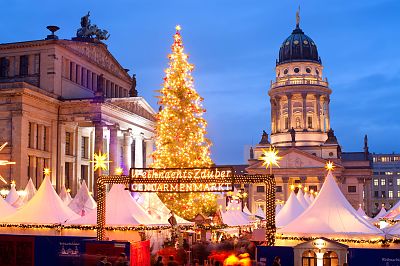
Christmas Along the Elbe
Starting from $3,999River Cruise Description
Take part in time-honored European holiday traditions on this 10-day cruisetour. Stroll among colorful stalls and mingle with locals as you sample glühwein. Revel in Berlin’s festive atmosphere and discover the treasured recipe for Dresden’s famous Christstollen. Shop for handmade porcelain in Meissen and spend two days in Prague, delving into the city’s Jewish history while its famed Christmas market exudes an abundance of good cheer.Thanks for your interest!
We'll be in touch soon.Error
I'm sorry, but an error has occurred. Try Again| Departure Date | Ship | Priced From (per person) | |
|---|---|---|---|
| Nov 26, 2026 | Viking Beyla | $4,299 | Call Us! |
| Dec 1, 2026 | Viking Astrild | $4,499 | Call Us! |
| Dec 6, 2026 | Viking Beyla | $4,499 | Call Us! |
| Dec 11, 2026 | Viking Astrild | $4,499 | Call Us! |
| Dec 16, 2026 | Viking Beyla | $3,999 | Call Us! |
River Cruise Itinerary
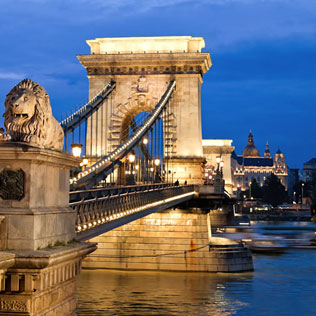
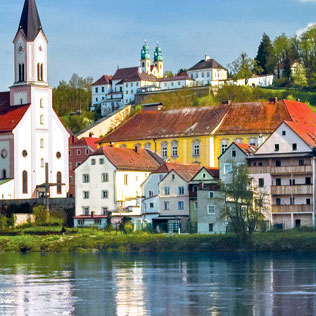
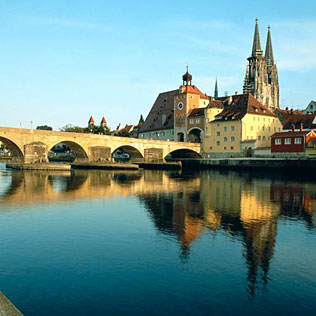
Day 1 Prague, Czech Republic
Arrive and check in to your hotel. Prague is known as the “City of a Hundred Spires” and it is easy to see why. The towering twin steeples of Týn Church and the beautiful baroque Church of St. Nicholas are among some of the city’s most notable. Best explored on foot, Prague’s Old Town is a maze of ancient cobblestone lanes with the Old Town Square at its core. Here, the medieval Astronomical Clock still chimes today and provides for its viewers a little theater with the “Walk of the Apostles” on the hour, every hour.;Day 2 Prague, Czech Republic
Few cities embody the past as authentically as Prague, the Czech Republic’s atmospheric capital on the Vltava River that clings to its history with unwavering passion. Prague’s medieval architecture is its most prominent, but the city is also a rich repository of Romanesque, baroque and art nouveau buildings that stir the imagination. The city’s graceful, pedestrian-only Charles Bridge served as the coronation route of the kings of Bohemia across the river to Hradčany Castle and its rich complex of royal buildings.;Day 3 Prague, Czech Republic
Check out of your hotel and explore more of the city. Since the invention of Pilsner in 1842, the Czechs have been recognized for their beer-brewing expertise, bringing famous brands such as Staropramen and Budějovický Budvar to Europe and beyond. Today, a thriving culture of microbreweries can be found in Prague, producing beers in varying degrees of strength and color, from pale to amber and dark to black. The frequent clinking of glasses to the cry of “Na zdraví!” can be heard in bars and cafés across Prague as locals raise a toast to each other.;Day 4 Bad Schandau, Germany
One of the oldest and most important spa resorts in Saxon Switzerland, the beautiful resort city of Bad Schandau has retained much of the splendor and charm of bygone ages. After iron-rich springs were discovered here in the mid-18th century, hotels and spa houses soon dotted the landscape. In 1920, the town (then Schandau) was awarded the right to use the prefix “Bad,” meaning “Spa.” For refugees and emigrants during World War II, this was a place of hope. Many were helped to safety by climbers who knew secret passes through the mountains and out of Germany.;Day 5 Dresden, Germany
Dresden is awash in artistic treasures and baroque splendor. The city is blessed with water meadows and green parks near the center, giving it a wide-open feeling and making it easy to focus on the beautiful sandstone buildings that line the river. It took Dresden more than 50 years to rebuild after it was devastated during Allied bombing. Most agree it was certainly worth the wait. The city has been lovingly restored to its original glory, from the ornate Frauenkirche (Church of Our Lady) and grand Semper Opera House to the shining Zwinger Palace.;Day 6 Meissen, Germany
Surrounded by idyllic wine villages and set at a rocky spur on the Elbe, Meissen dates back more than a thousand years. The city is dominated by its 13th- and 14th-century Gothic cathedrals and Albrechtsburg Castle, perched on a low hill, considered one of the great achievements of German architecture. The introduction of porcelain here by Johann Friedrich Böttger in the early 18th century made Meissen world famous. Meissenware has been produced here ever since. Across the city, the chimes of the Gothic Church of Our Lady’s bells can be heard; they were the first church bells made of porcelain.;Day 7 Wittenberg, Germany
Wittenberg is an important center of culture and learning, known mostly as the birthplace of the Protestant Reformation. It was here that the Augustinian monk Martin Luther famously nailed his “95 Theses” against the selling of indulgences to the door of the palace church in 1517, launching the spread of a new religious movement throughout Europe. Wittenberg’s incredibly preserved Old Town was spared destruction during World War II, and so its charming houses remain as they have for centuries, with those in the market square huddled around the beloved statue of Luther.;Day 8 Potsdam, Germany
After breakfast, disembark your ship and transfer to your destination. Potsdam straddles one of the Elbe’s main tributaries, the Havel River. It boasts a rich history that spans more than 1,000 years. From its humble beginning, Potsdam burgeoned into a royal city, hosting the residences of Prussian and German rulers until the early 1900s. A series of tumultuous events followed, but through it all, Potsdam maintained its prominent stature. And in 1990, with Germany’s reunification, Potsdam was named Brandenburg’s state capital. Today, the city’s regal past lives on in its 16 well-preserved palaces and three elegantly landscaped parks.;Day 9 Berlin, Germany
After a decades-long postwar rift, Germany’s capital has been reunified and undergone a remarkable rebirth as a center of art, culture and great architecture. It is still riding the wave of its newfound energy, and exploring its streets feels akin to browsing a newly opened museum. Risen from the ashes of war, many of its buildings that once stood for division now embrace unity. Among them, the Reichstag parliament building embodies a new transparency with its glass dome, and the city’s Museum Island celebrates self-expression and creativity.;Day 10 Berlin, Germany
Berlin is one of Europe’s most cosmopolitan and forward-thinking capitals. When the Berlin Wall fell in 1989, a sweeping transformation took hold and is powerfully symbolized in the Reichstag, Germany’s parliament building. Monuments of wartime are everywhere here, from remnants of the wall to Checkpoint Charlie. Prewar treasures include the baroque Charlottenburg Palace and 13th-century St. Nicholas Church. Straddling the Spree River and peppered with grand theaters and more than 170 museums—many of them on Museum Island—today’s Berlin is a major cultural center. After breakfast, check out of your hotel and journey home.;Having trouble deciding which cruise is right for you?



